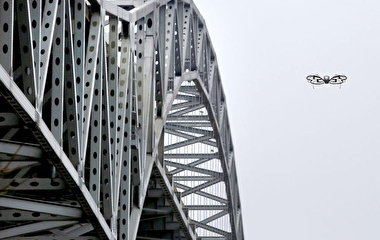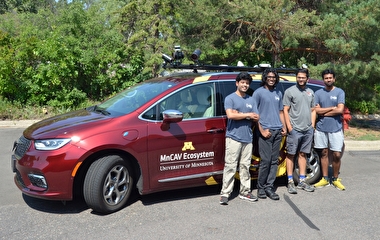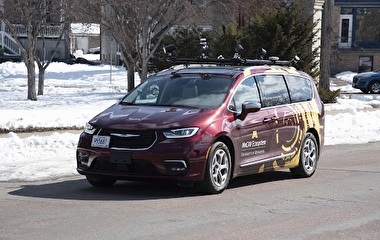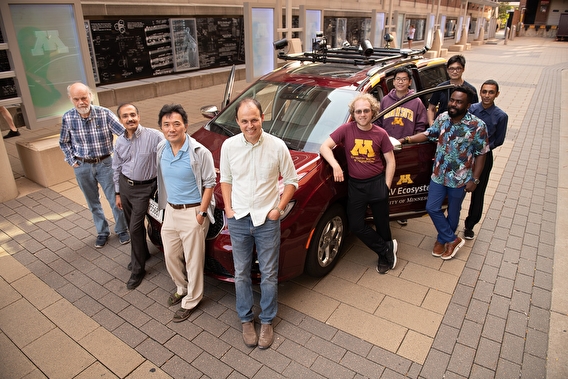
There’s been a lot of progress toward self-driving cars in recent years, but we still have a long way to go before the system runs like a well-oiled machine. Even with all the advances in artificial intelligence and machine learning, automated vehicles (AVs) are still not well-equipped to handle crashes, bad weather, poor visibility, and other unexpected situations on the road.
These challenges have given rise to the concept of teleoperated AVs, or AVs that are partially controlled by a remote operator when necessary. While this concept makes AV adoption more feasible, there’s more to it than just a person managing the vehicle from an off-site location.
“You need the vehicle to receive directions, but you also need the system that is operating everything to quickly receive data from the vehicle and from other vehicles, to give that remote operator a sense of what’s going on,” said Joseph Konstan, associate dean for research at the U of M’s College of Science and Engineering (CSE).
It’s a complicated problem, but an interdisciplinary team of researchers are determined to figure it out in a project funded by CSE’s new InterS&Ections seed grant program. The program was designed to spark new collaborations between scientists and engineers that could address significant challenges.
“We don’t just want to make the car smart—we also want to make the infrastructure smart by using advanced network communication technologies such as 5G and edge computing,” said Zhi-Ling Zhang, the project’s principal investigator and a professor in the Department of Computer Science and Engineering.
Think of it as air traffic control, but for self-driving vehicles. Zhang’s team will develop new models and algorithms to move us closer to edge-assisted intelligent driving systems. Unlike larger-scale cloud computing, edge computing puts the data closer to the location where it’s being generated, at the “edge” of the network.
“The amount of data we need to collect is huge, and shifting all that information to the cloud would take a lot of bandwidth and result in delays,” Zhang said. “Edge computing will help us process the information faster.”
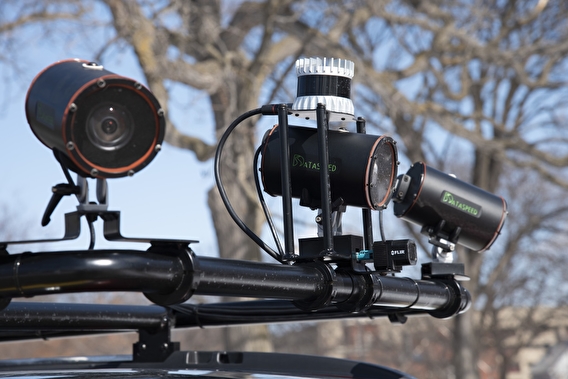
Zhang has led some of the world’s first large-scale, commercial 5G measurement studies. Co-investigator Rajesh Rajamani is a leading expert on estimation and vehicle control for intelligent transportation systems, and co-investigator Jeff Calder is an expert on graph learning and related topics. Putting their heads together, the team is likely to lay a foundation for future funding while boosting Minnesota’s reputation as a leader in AV research.
Thanks to its state-of-the-art research facilities, the University is an ideal place for this project. Under the umbrella of the new MnCAV Ecosystem, researchers, government, and industry partners are coming together to develop and test connected and automated vehicle technologies. Led by CTS, this ecosystem includes a fully automated 2021 Chrysler Pacifica minivan that serves as a customizable, experimental testbed.
Ultimately, the project team will help identify the most critical needs for the nation’s physical and digital AV infrastructures. “We’re not funding this because, at the end of a year or two, we’re going to magically see these autonomous vehicles driving around campus,” Konstan said. “It’s about a longer-term national priority—and this team is addressing the gaps that need to be filled in order to get us there.”
The project was 1 of 2 selected from more than 20 InterS&Ections grant proposals to receive around $100,000 in 2022–23. The funds will support research assistants, materials, and equipment, with potential renewal for a second year based on the team’s progress.
Adapted from an article by Eve Daniels in Inventing Tomorrow, a publication of the U’s College of Science and Engineering.
